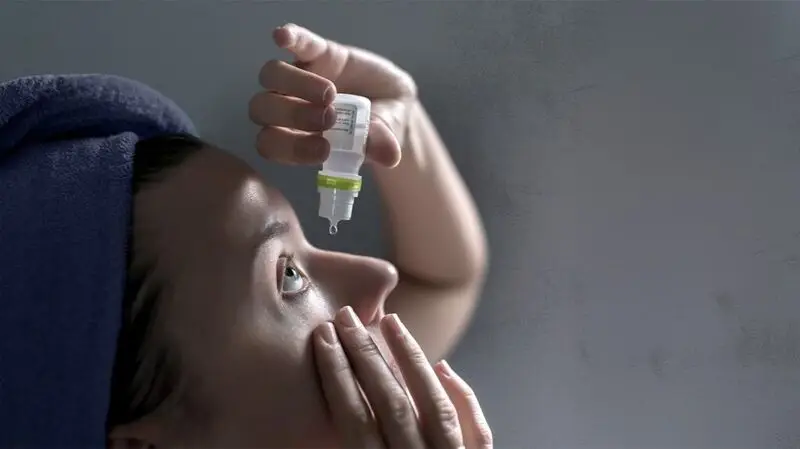
- Several areas of the body have a microbiome, including the gut, skin, mouth, nose, ear, and eyes.
- Researchers have been studying the eye microbiome and its role in eye diseases such as dry eye.
- Researchers from Stephen F. Austin State University have found the eye microbiomes of Healthy eyes and those with dry eye differ in their mix of microbes.
- Scientists believe this finding could help improve treatments for not only dry eye but other eye conditions as well.
While everyone has heard about the
Over the past few years, researchers have been focusing on studying the eye microbiome and its role in
Now, a new study recently presented at Discover BMB, the annual meeting of the American Society for Biochemistry and Molecular Biology, reports how the eye microbiomes of healthy eyes and those with dry eye differ in their mix of microbes.
The study’s researchers from Stephen F. Austin State University believe this finding could help improve treatments for not only dry eye but other eye conditions as well.
The eye microbiome refers to the community of bacteria and other microorganisms present on the conjunctiva and the cornea of the eye.
The conjunctiva of the eye is the thin, clear membrane covering the white portion of the eyes, while the cornea is a clear, dome-shaped covering for the very front of the eye.
“Recent research suggests when there is
In addition to dry eye, scientists have been studying the impact of the eye microbiome on other eye diseases such as age-related macular degeneration (AMD),
For this study, Dr. Martynova-Van Kley and her team collected eye samples from 30 volunteer participants using a swab. They then performed
Upon analysis, the researchers found the bacteria species
In the eye microbiomes of participants with dry eye, scientists discovered the
“It was surprising to know the eye microbiome with dry eye condition have mostly Acinetobacter species, but we found other ocular diseases like
hypertension andhigh cholesterol have other species richness which are closely related to each other. Having a better idea of what causes dry eye condition is important to improve diagnosis, treatment, and prevention from this disease condition.”
— Dr. Alexandra Martynova-Van Kley
“Insights into the causes of dry eyes provide valuable information that can drive the development of novel therapeutic approaches, leading to better outcomes for individuals suffering from this condition,” she continued.
“Next steps will be increasing the sample size and understanding the signaling pathways associated with the indicator species in dry eye conditions. This can provide insight into metabolites that are responsible for the disease condition,” she added.
After reviewing this research, Dr. David Geffen, director of optometric and refractive services at the Gordon Schanzlin New Vision Institute in La Jolla, CA, told MNT he found it very interesting.
“If we can modify the microbiome of the eye to help with dry eye patients, a true breakthrough would be seen,” Dr. Geffen continued. “Dry eye is an exponential problem and this new take on it could prove to be the answer for millions of sufferers. I would expect many more researchers to start looking at this approach and coupling this with drug use.”
MNT also spoke about this study with Dr. Benjamin Bert, a board-certified ophthalmologist at MemorialCare Orange Coast Medical Center in Fountain Valley, CA.
Dr. Bert commented that this research helps to support a lot of what we’ve been discovering over the last number of years about dry eye and the multifactorial effects that it can have.
“[L]ooking at the change that can occur just to the normal bacteria that live on the surface of the eye shows that the treatment of dry eye in itself needs to be likely multifactorial. We’ve known for certain dry eye conditions and blepharitis that treating with antibiotics has helped, but the reason for that has always been a little bit murky. And I think studies like this that show that there’s a change in the normal bacteria that are on the surface of the eye support reasons why those treatments do have benefit to patients.”
— Dr. Benjamin Bert
All experts agree that we will be seeing more future research focused on the eye microbiome for not only dry eye but other eye conditions as well.
“I strongly believe the ocular microbiome research is emerging very fast and research is already going on related to other eye diseases. This research will really help to understand (the) gut-eye axis in (a) better way,” Dr. Martynova-Van Kley said.
“I certainly think that we are just at the beginning of all of this type of research,” Dr. Bert said.
“I would anticipate that there’s going to be many more studies looking at other types of changes that can occur to the microbiome on the surface of the eye, especially for different patients with different conditions that need to use different eye drops frequently and how that changes the surface of their eye. I think we are just beginning to touch the beginning portions of this type of research — (I) certainly would expect to see a lot more coming out,” he added.
“This is only the beginning of these types of studies. We may find this approach to help with many other eye conditions. I would think this could (also) be an early approach to genetic changes for certain disorders.”
— Dr. David Geffen





